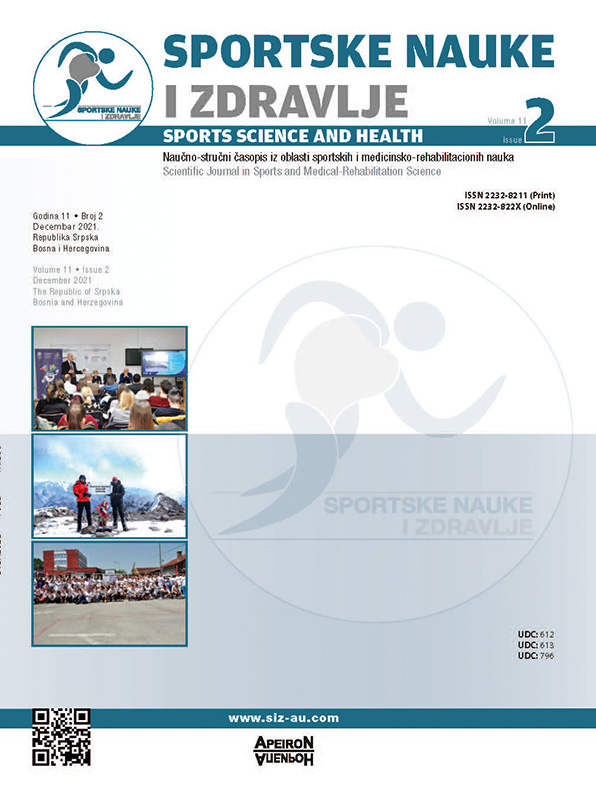Three workouts compared: interval training, intermittent training and steady state training for the improvement of VO2max and BMI
DOI:
https://doi.org/10.7251/SSH2102197AAbstract
An optimal soccer training, among many objectives, should allow both the improvement of VO2max, or the maximum oxygen supply, and of the anthropometric data. The purpose of the study was to examine the effects of intermittent training, interval training and steady state training methodologies on VO2max and BMI of the players. The sample was made up of 30 young amateur players (age, Mean ± standard deviation [SD] = 16 ± 0.74 years old) randomly divided into three 3 groups of 10. Each group performed a different resistance training methodology for 3 months: group 1 performed intermittent training, group 2 interval training and group 3 steady state training. The parameters taken into consideration were BMI and VO2max, obtained from Gacon test. Paired Sample T Test was performed to check the difference between pre and post 12 training weeks of each group regarding VO2max and BMI. A 3x2 mixed ANOVA was used to test for differences in training programs induced changes in maximal strength and functional capacity variables. The independent variables included one between-subjects factor (training intervention) with three levels (IT, HIIT, and SST), and one within-subject factor (time) with two levels (pre- and post-intervention). A significant difference (p<0.05) between pre and post all of the three training protocols on VO2max was found, but no significant interaction (p>0.05) between group and time. BMI had no significant improvement (p>0.05). Intermittent, interval and endurance training all were equally effective improving VO2max, but not BMI.
